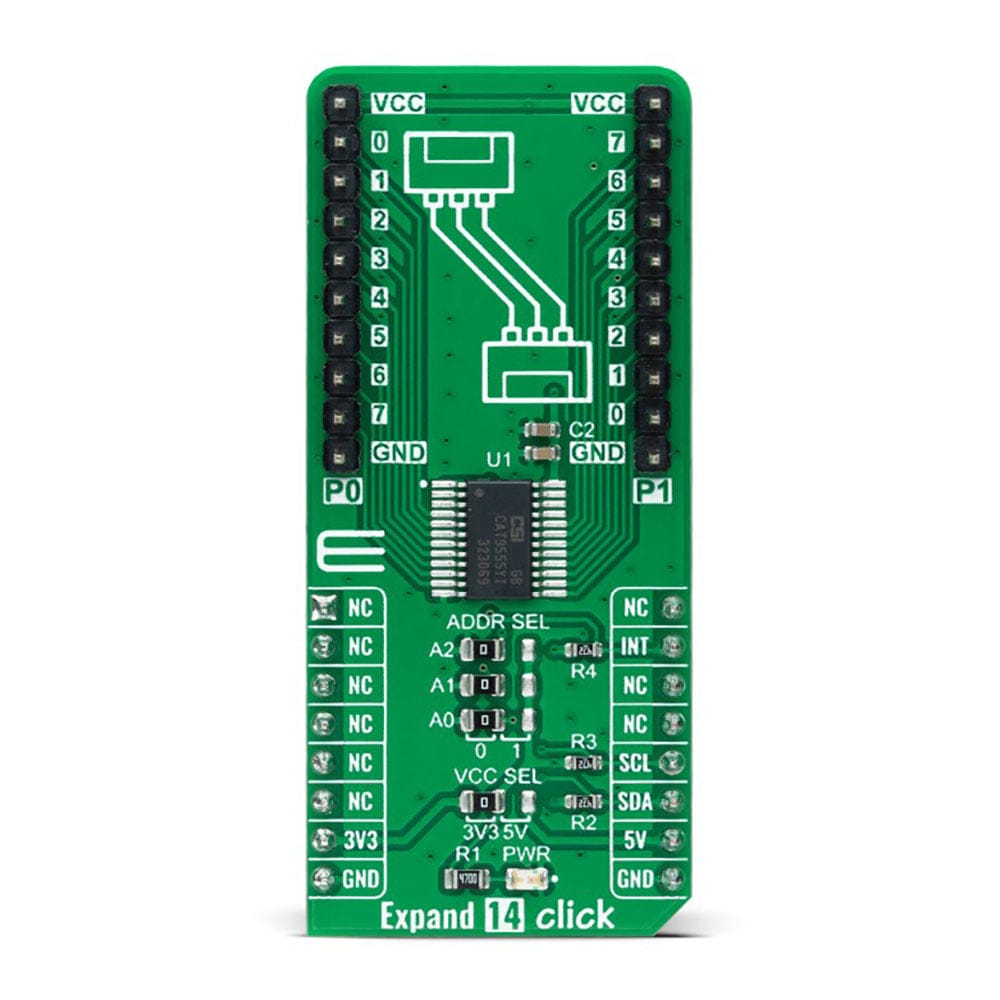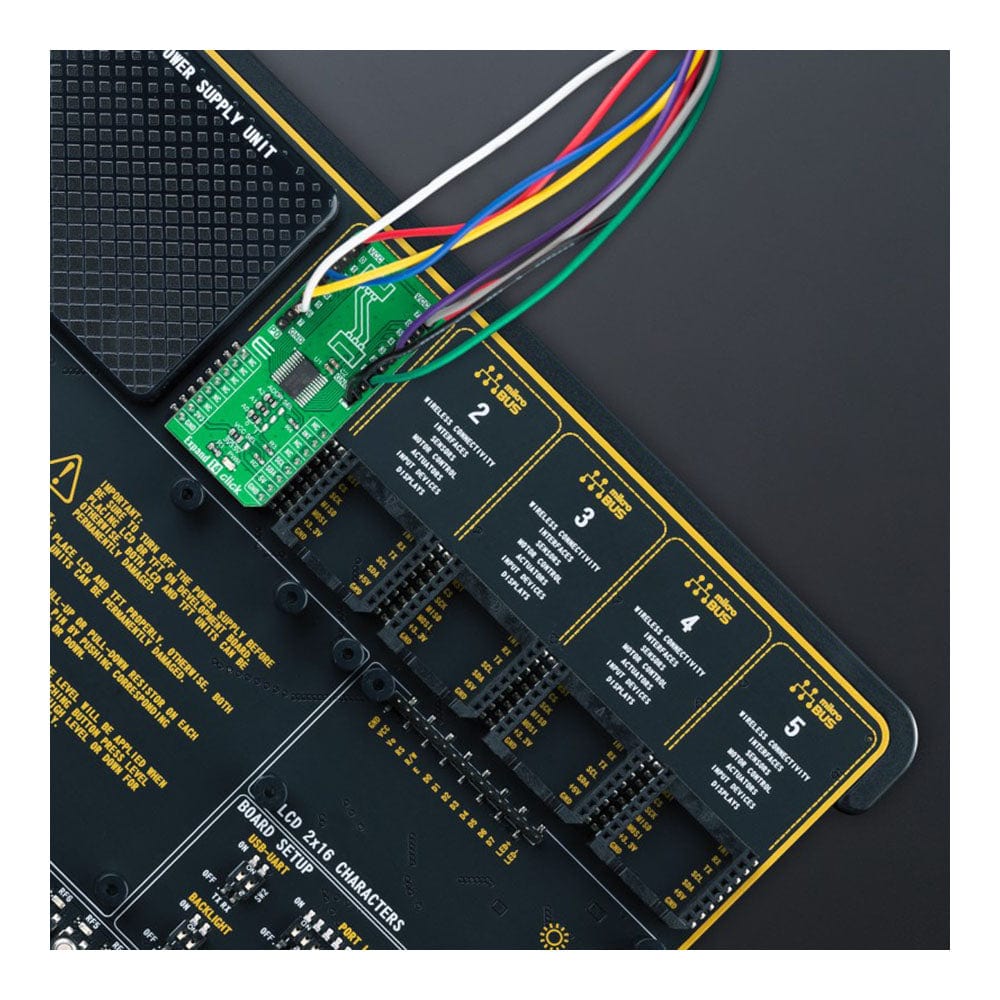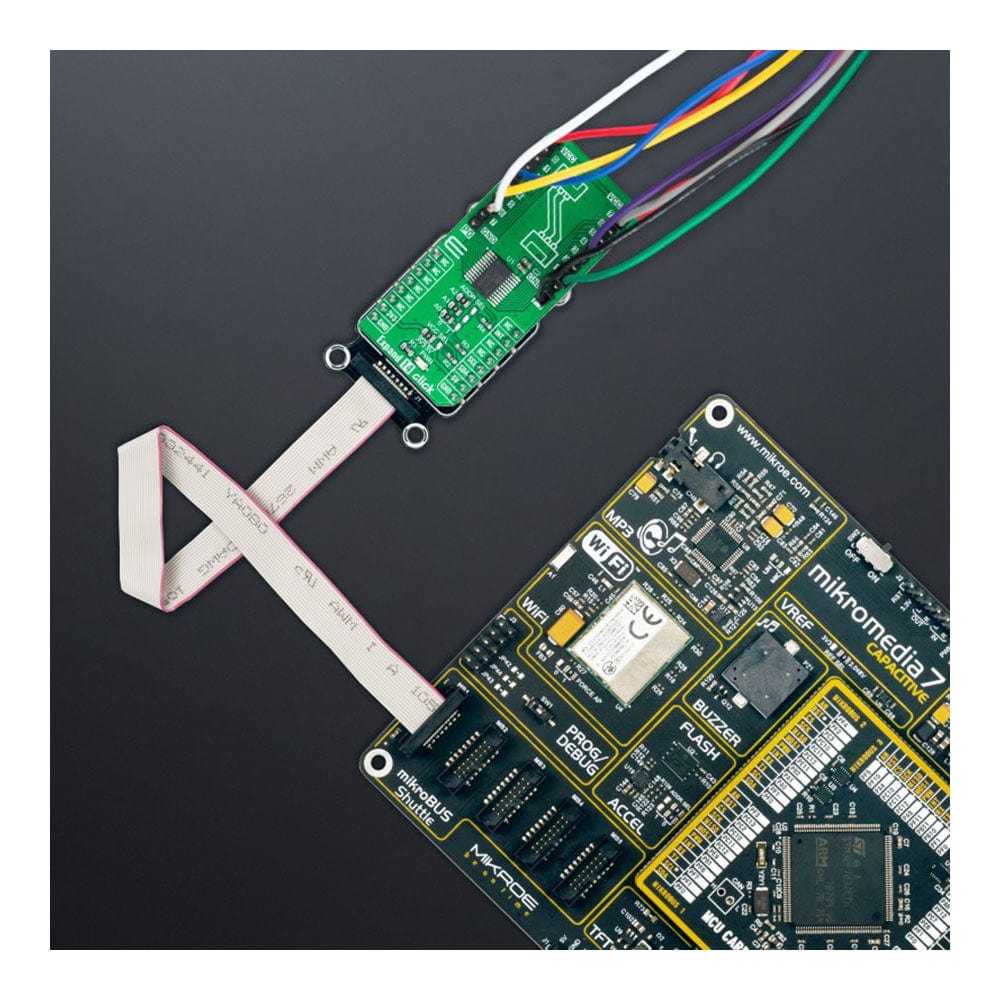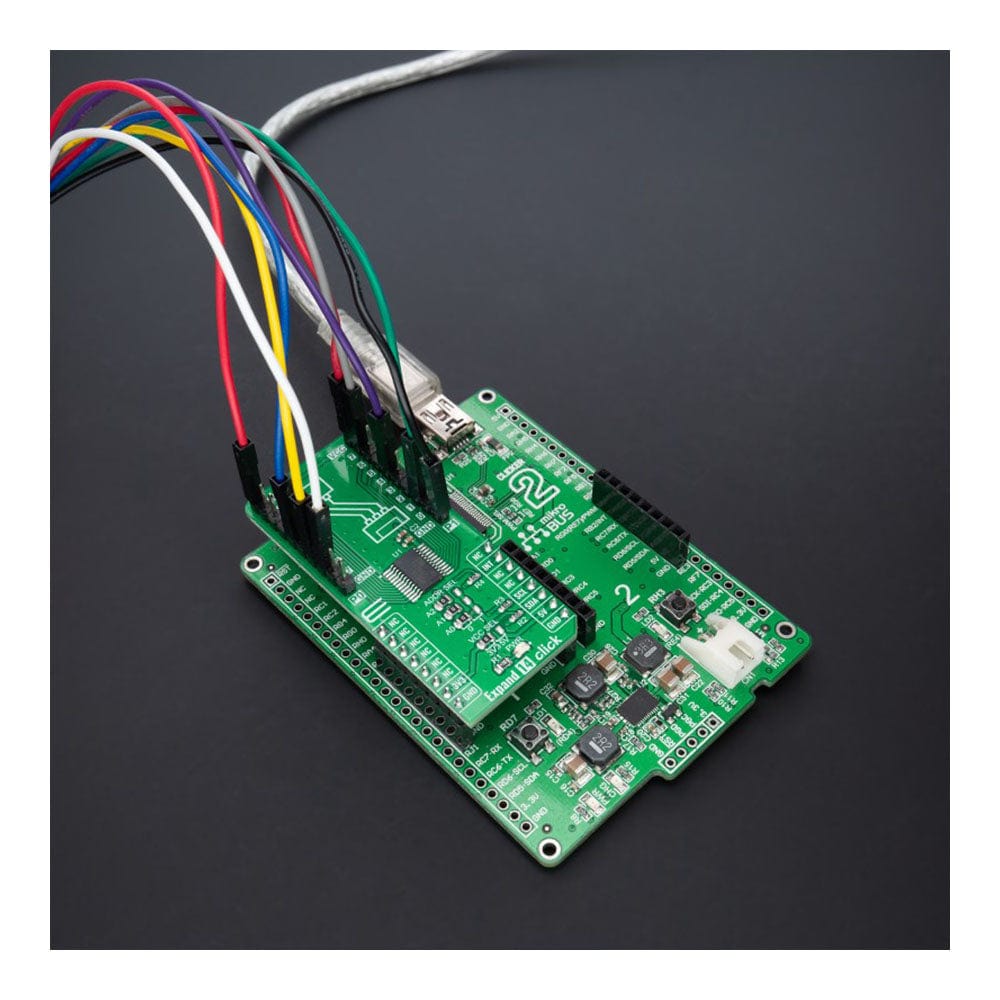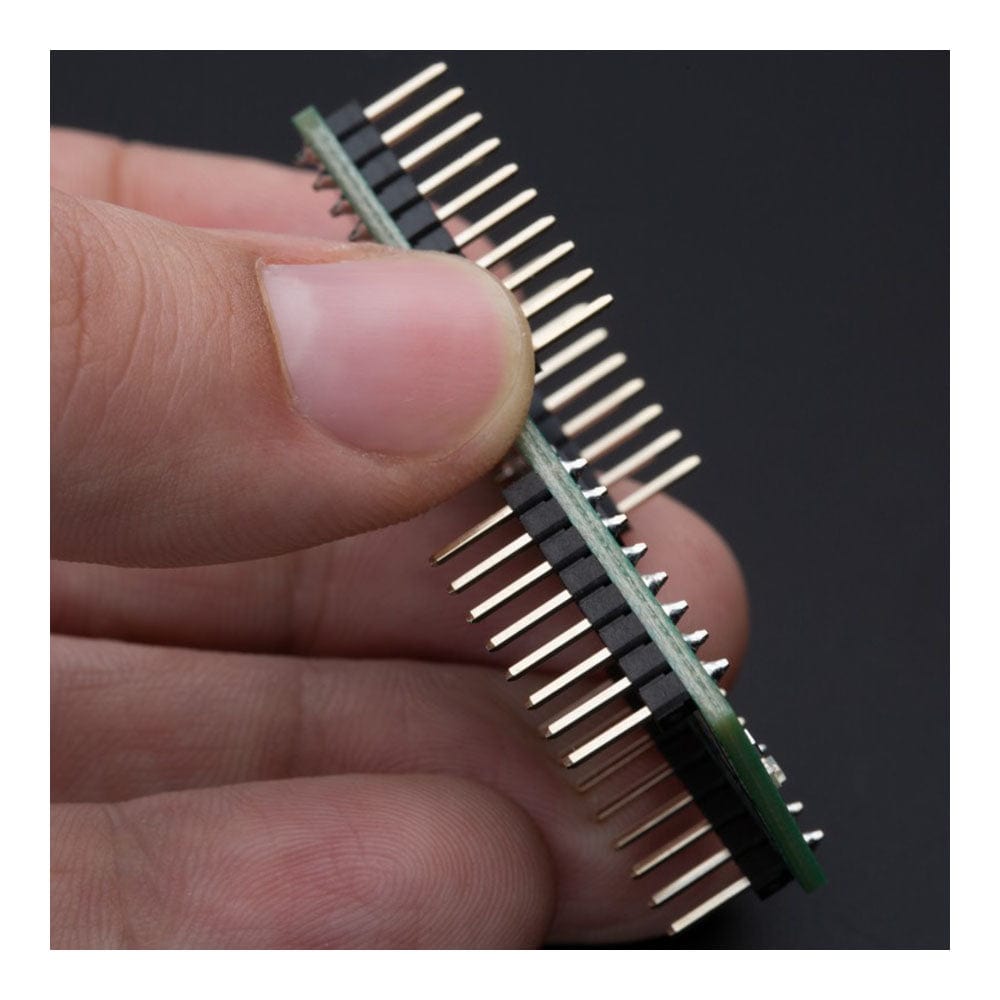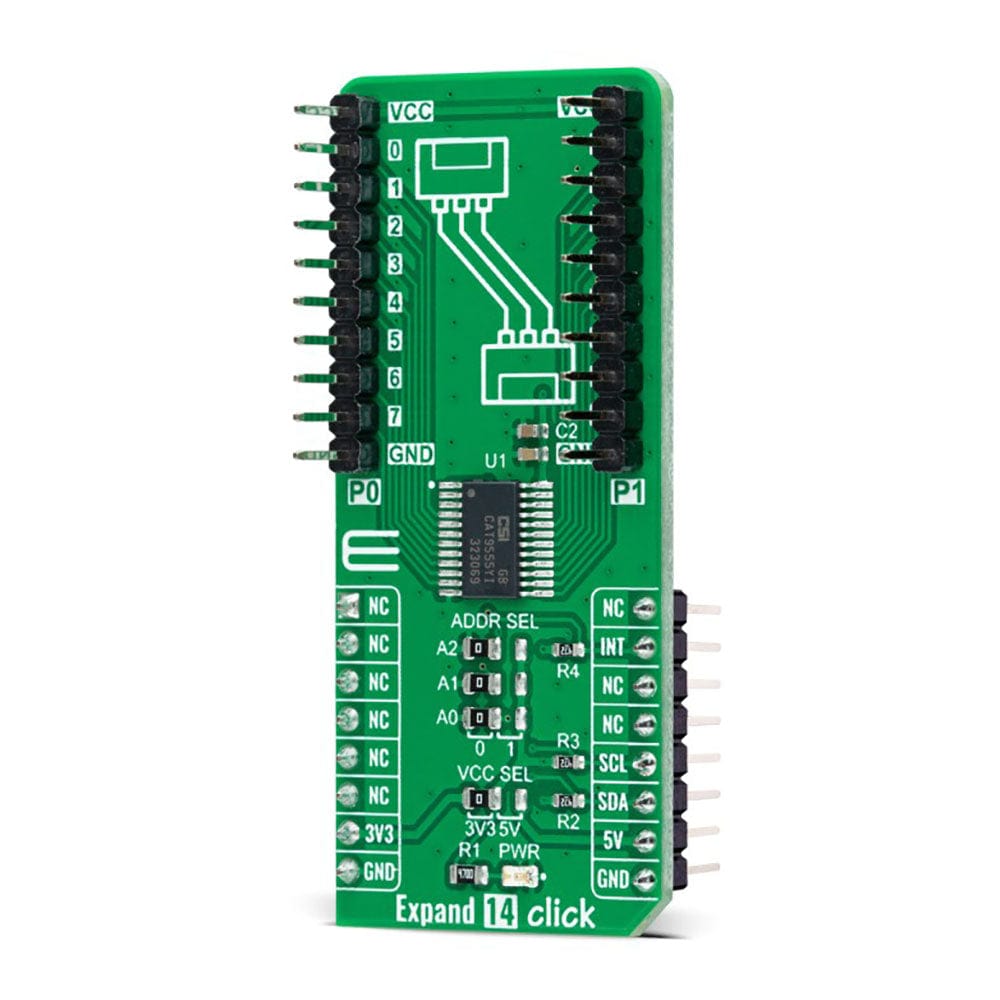
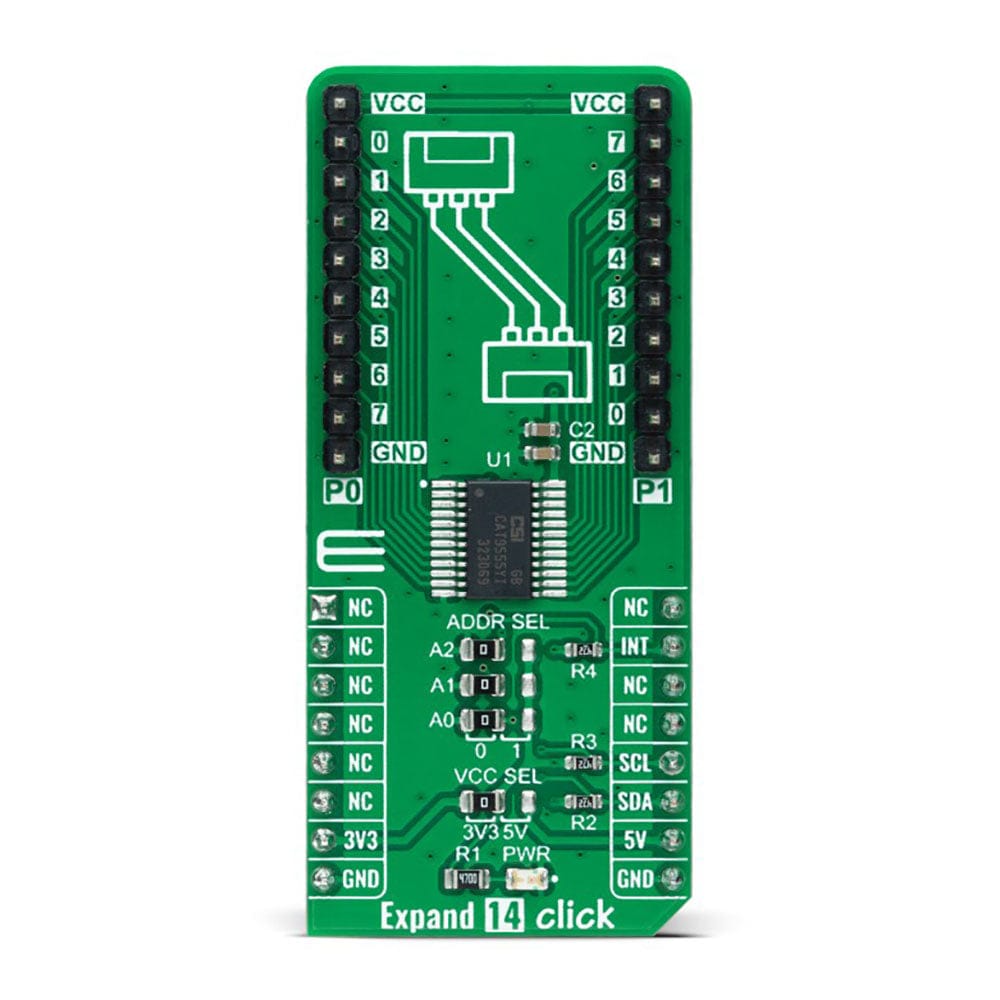
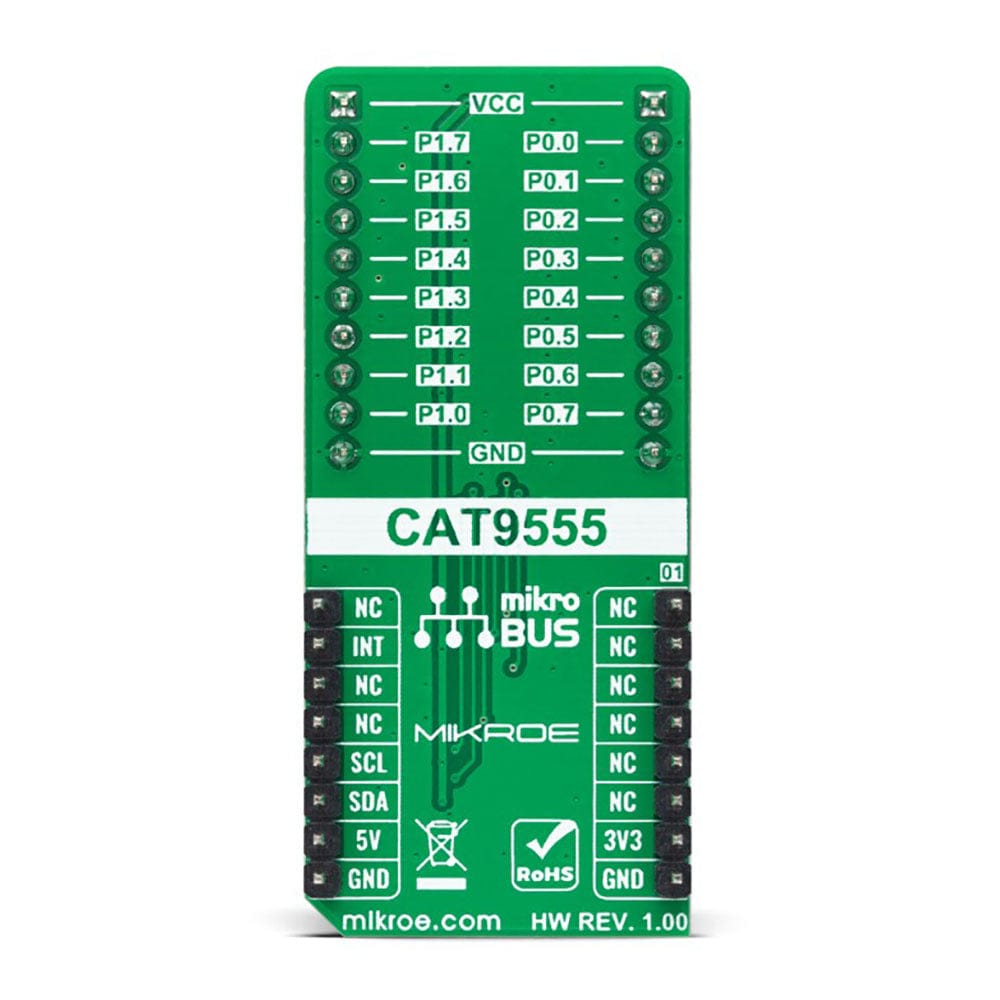
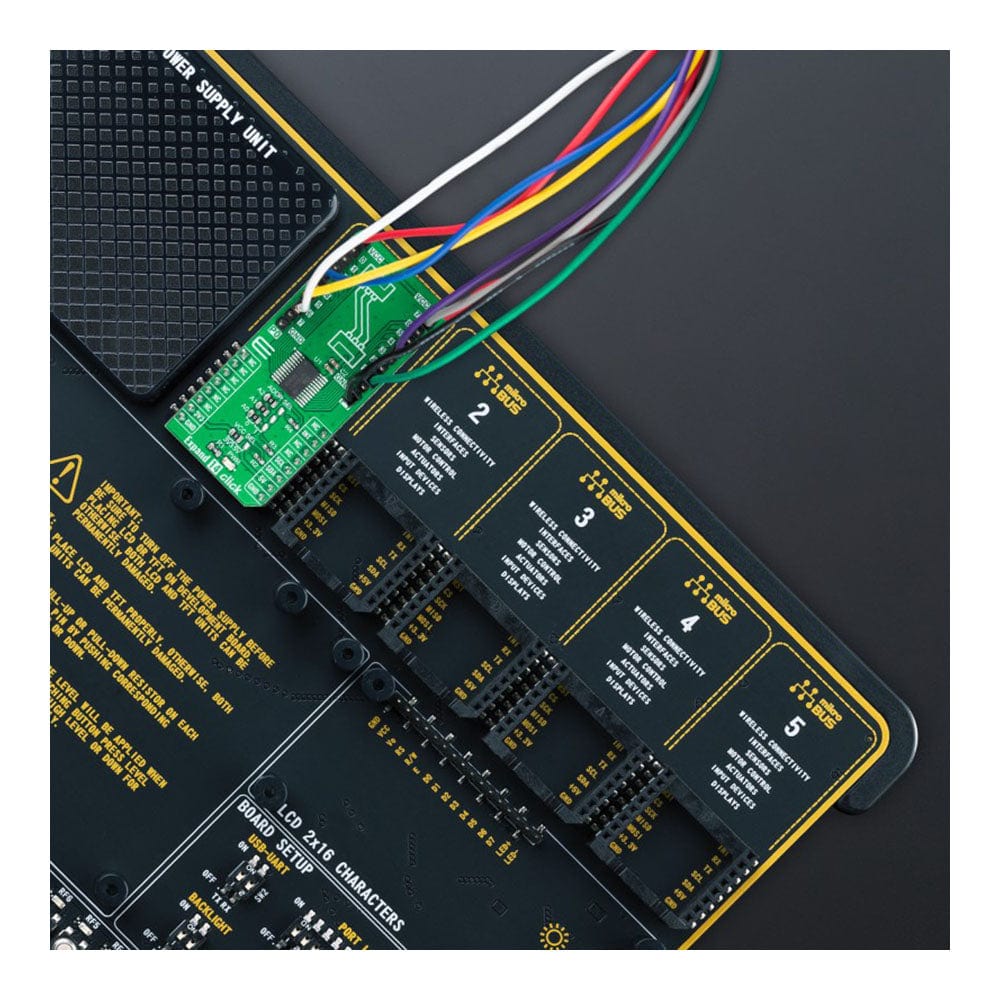
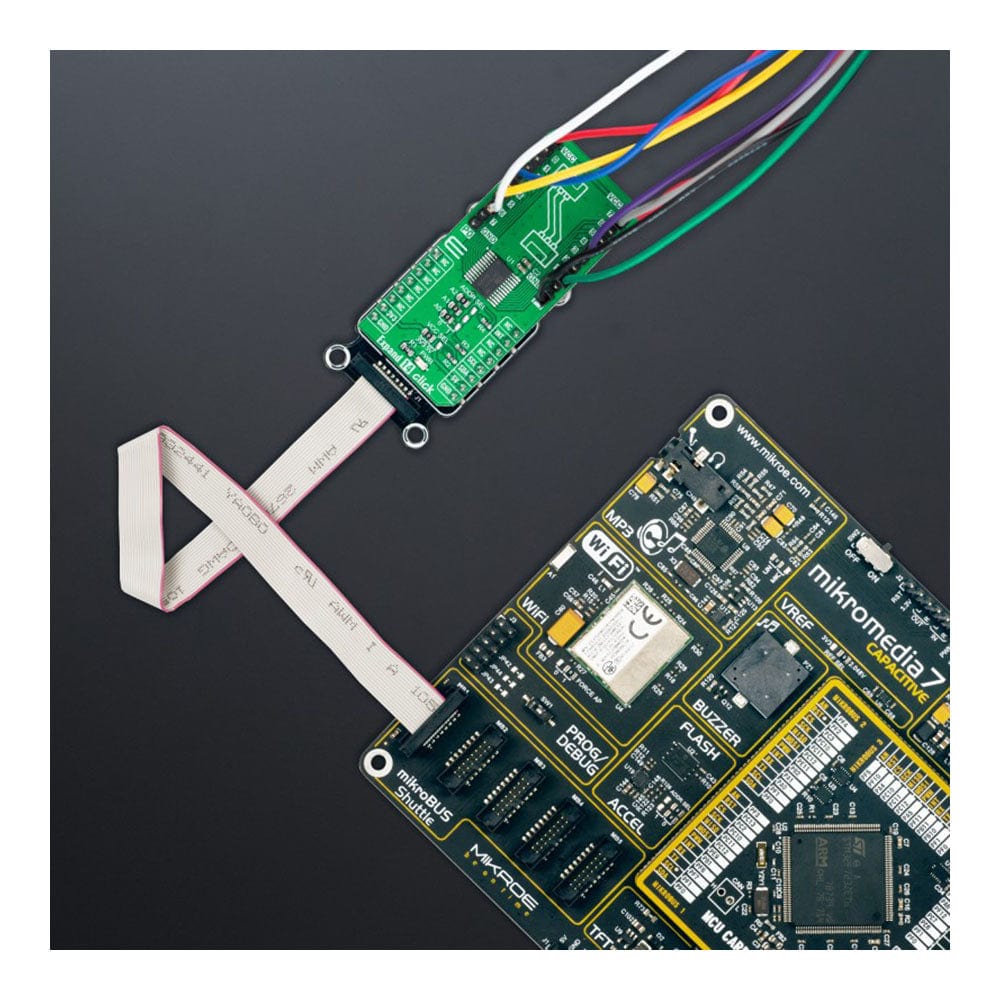
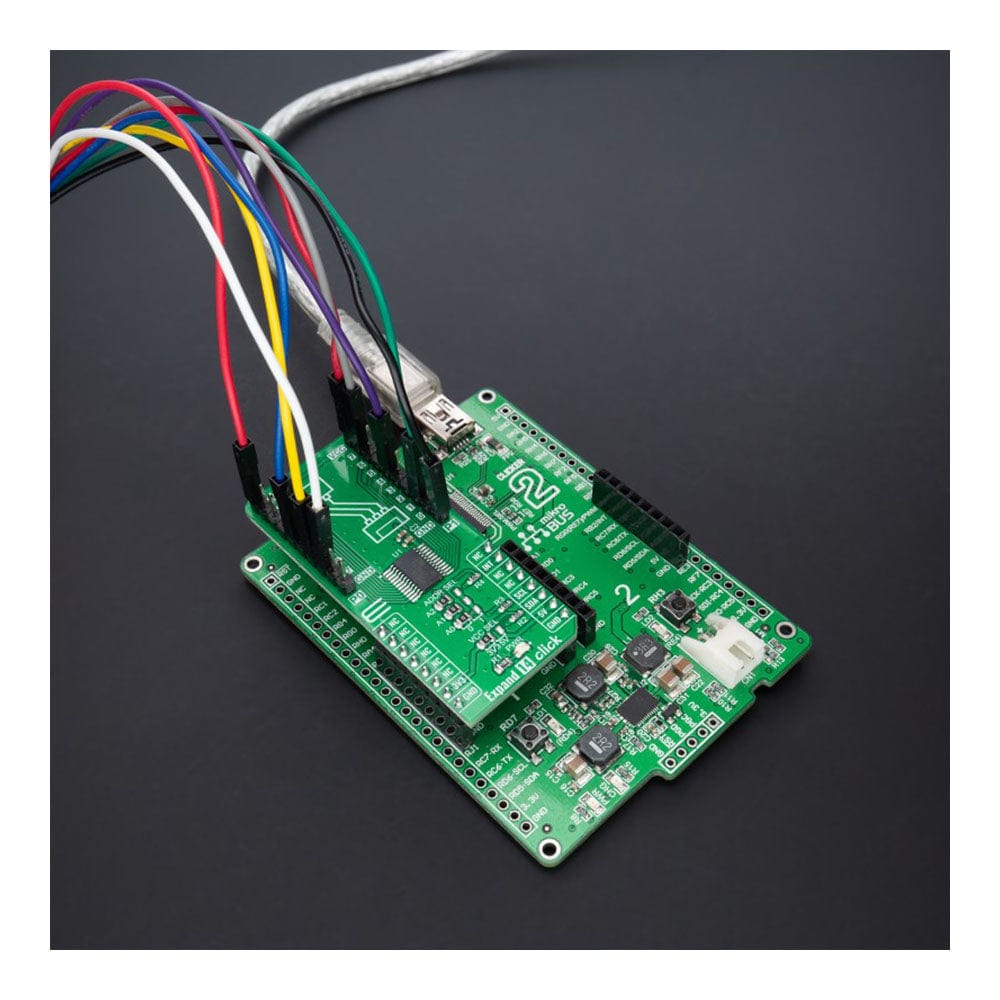
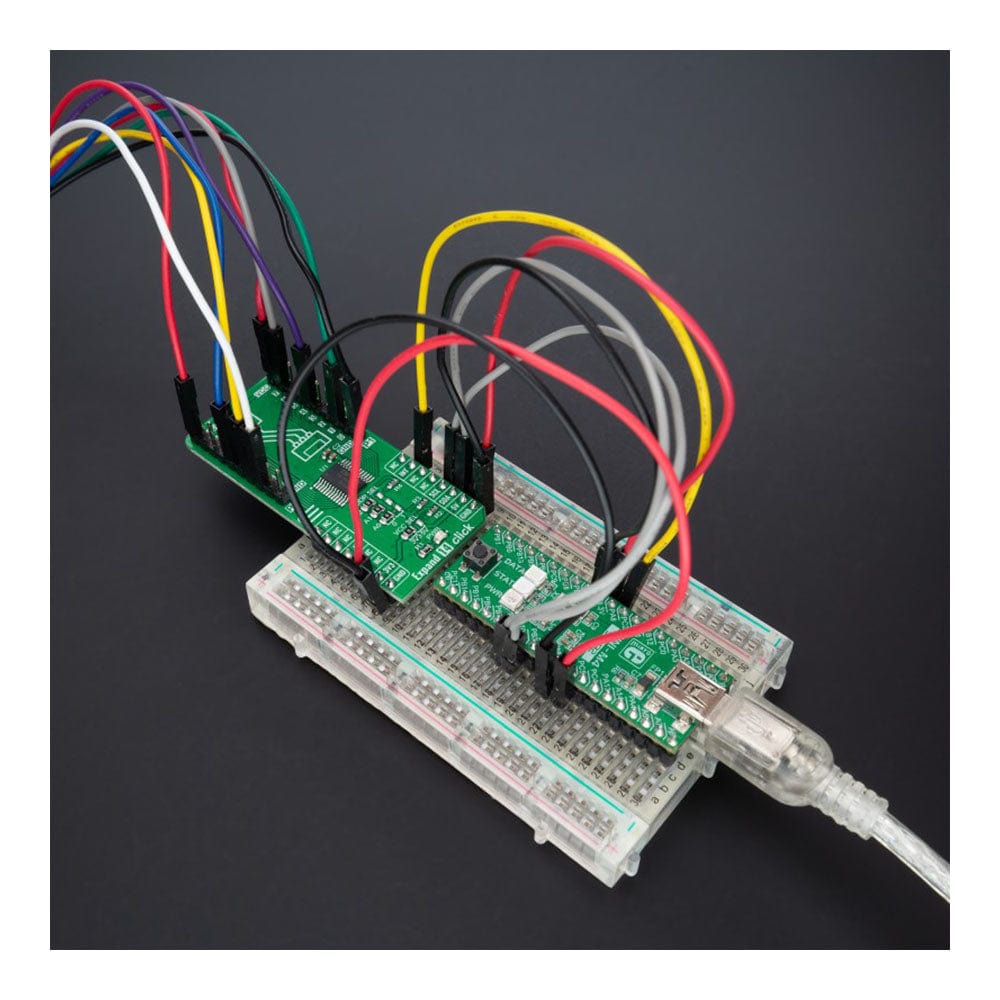
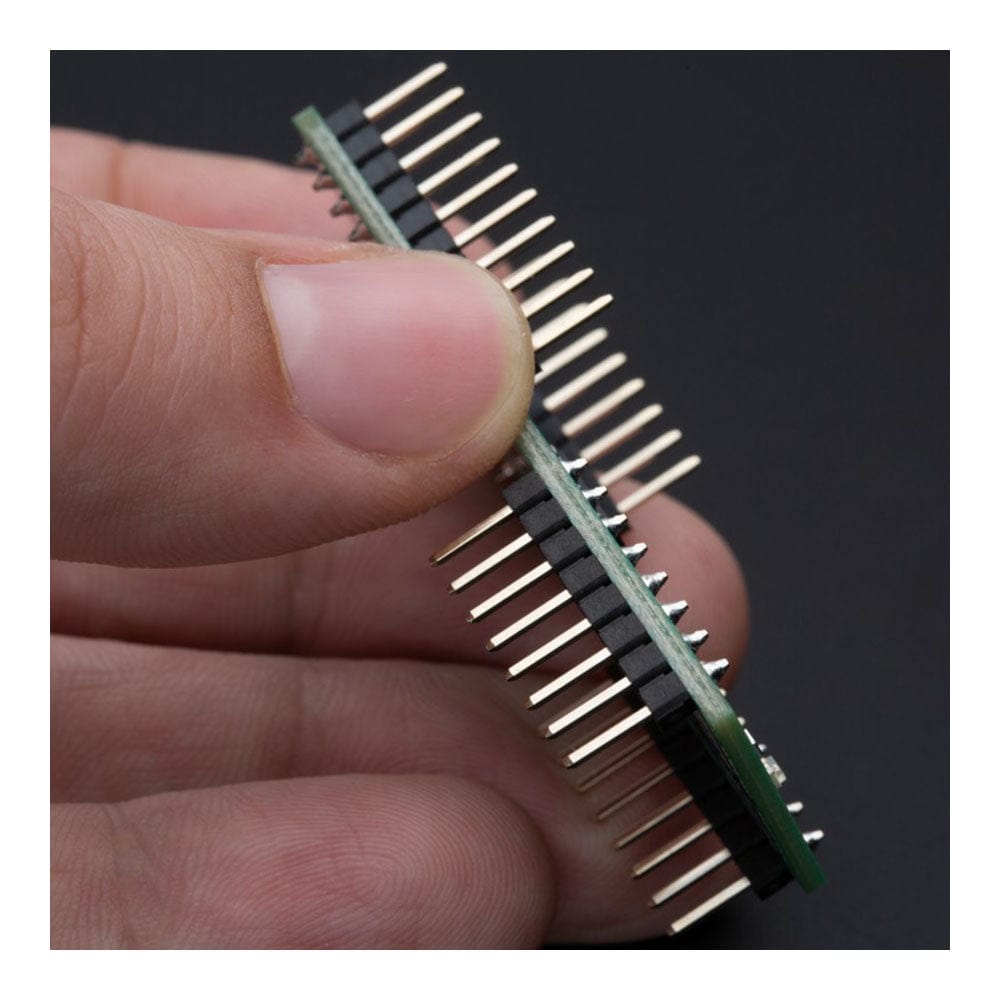
Key Features
Overview
The Expand 14 Click Board™ is a compact add-on board that contains a multi-port I/O expander. This board features the CAT9555, a CMOS device that provides 16-bit parallel input/output port expansion from ON Semiconductor. The CAT9555 contains two 8-bit configuration ports (input or output), input, output, and polarity inversion registers, alongside an I2C-compatible serial interface. Any sixteen I/Os can be configured as an input or output by writing to the configuration register. It also features an active-low interrupt output, indicating to the host controller that an input state has been changed. This Click board™ provides a simple solution when additional I/Os are needed while keeping interconnections to a minimum in system monitoring applications, industrial controllers, portable equipment, and many more.
The Expand 14 Click Board™ is supported by a mikroSDK compliant library, including functions that simplify software development. This Click board™ comes as a thoroughly tested product, ready to be used on a system equipped with the mikroBUS™ socket.
Downloads
La carte Expand 14 Click Board™ est une carte complémentaire compacte qui contient un extenseur d'E/S multiport. Cette carte est équipée du CAT9555, un dispositif CMOS qui fournit une extension de port d'entrée/sortie parallèle 16 bits d'ON Semiconductor. Le CAT9555 contient deux ports de configuration 8 bits (entrée ou sortie), des registres d'entrée, de sortie et d'inversion de polarité, ainsi qu'une interface série compatible I2C. Les seize E/S peuvent être configurées comme entrée ou sortie en écrivant dans le registre de configuration. Elle est également équipée d'une sortie d'interruption active-basse, indiquant au contrôleur hôte qu'un état d'entrée a été modifié. Cette carte Click™ offre une solution simple lorsque des E/S supplémentaires sont nécessaires tout en réduisant les interconnexions au minimum dans les applications de surveillance système, les contrôleurs industriels, les équipements portables et bien d'autres.
La carte Click Board™ Expand 14 est supportée par une bibliothèque compatible mikroSDK, comprenant des fonctions qui simplifient le développement logiciel. Cette carte Click Board™ est un produit entièrement testé, prêt à être utilisé sur un système équipé du socket mikroBUS™.
| General Information | |
|---|---|
Part Number (SKU) |
MIKROE-5241
|
Manufacturer |
|
| Physical and Mechanical | |
Weight |
0.02 kg
|
| Other | |
Country of Origin |
|
HS Code Customs Tariff code
|
|
EAN |
8606027388194
|
Warranty |
|
Frequently Asked Questions
Have a Question?
Be the first to ask a question about this.


